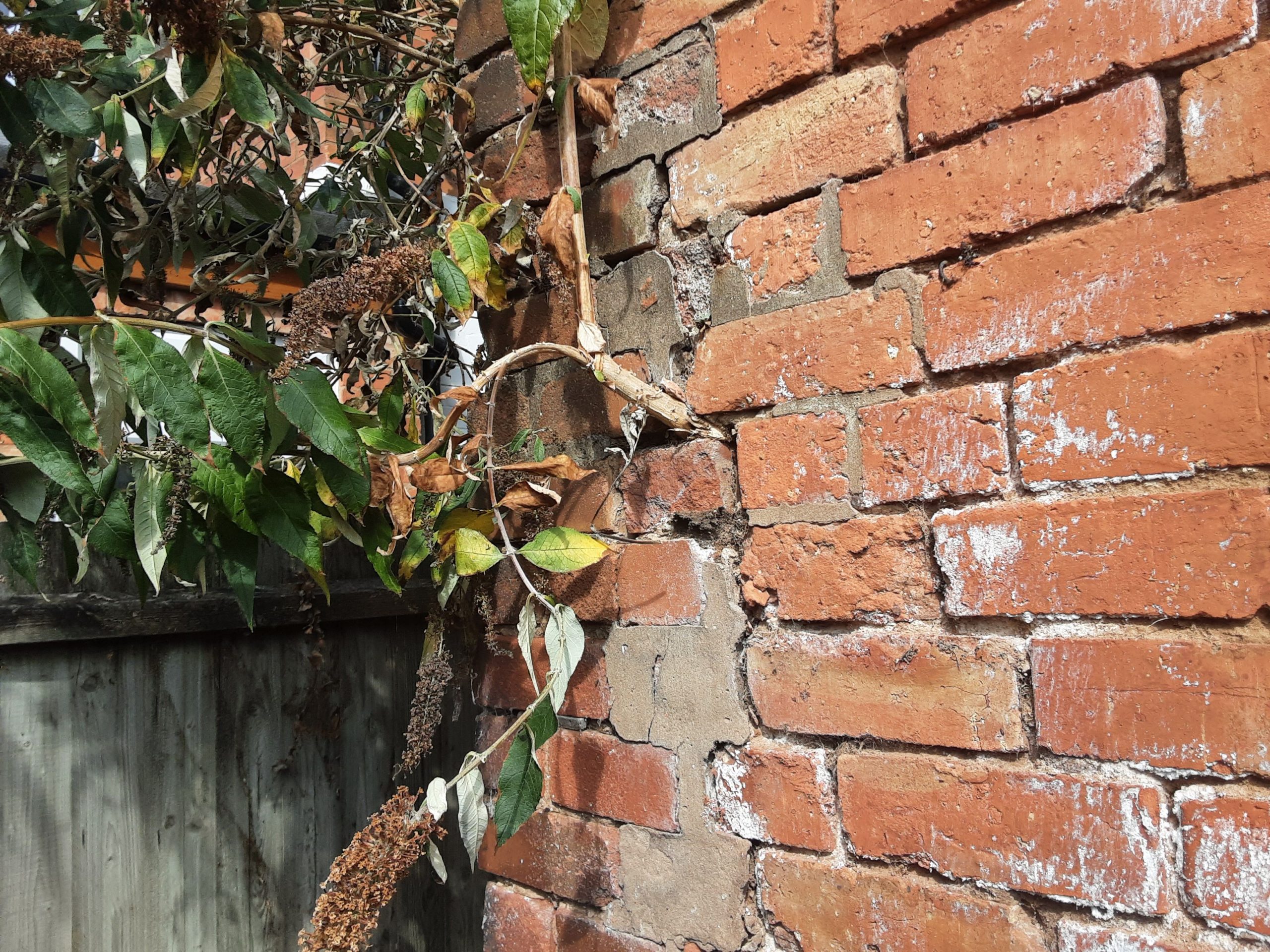Does Buddleia cause the same damage as knotweed?
To answer this question we need to first look at the structure of Buddleia, its growth pattern and its characteristics to see the connection between this invasive plant and Japanese knotweed. Whilst Buddleia is indeed an attractive garden plant, providing a haven for bees and other pollinators, when left uncontrolled in nature it can become an invasive nuisance.
Buddleia
- Invasive
- Fast growing
- Medium to large shrub
- Grows up to 15ft tall
- Young stems are green, older stems have peeling, grey-brown bark
- Spreads by thousands of tiny seeds which can collonise in building crevices or cracks causing severe damage
- Has a fibrous root system that grows through the top layer of soil
- Does not possess a tap root
Japanese knotweed
- Invasive
- Fast growing
- Grows in clumps (or stands)
- Canes grow up to 7ft high
- Young canes are fleshy, pale green and hollow, older canes are brown and woody
- Spreads by underground rhizome (root system)
- Does not produce seeds
So we can clearly see some similarities in that both species are invasive in their growth pattern, but are not similar in their structure. Most notably Buddleia spreads by air borne seeds and knotweed spreads by underground rhizomes. So the biggest similarity is the damage to structures that both plants can cause, by both root and plant growth. Both can grow prolifically, spreading onto neighbouring property (creating encroachment issues) and both are difficult to control or eradicate. However, there are two big differences:
- Buddleia is not listed among the wild invasive non-native plants listed on Schedule 9 of the Wildlife and Countryside Act therefore it is not illegal to grow Buddleia or plant it in the wild.
- Japanese knotweed is listed on Schedule 9 and subject to section 14 of the Wildlife and Countryside Act 1981,1 which makes it an offence to allow the plant to escape or cause it to grow in the wild.
Do Buddleia roots cause damage?
The picture below is an example of Buddleia literally growing through a building, but being this close to it the roots will have undoubtedly created structural damage to the foundations as well. This type of invasion makes it extremely difficult to remove, as the plant has damaged the structure of the wall by forcing the cement between the bricks. It is estimated the cost of damage to properties, both historical and private by Buddleia in the UK currently is around £1m.

Do Japanese knotweed roots cause damage?
As the underground roots of Japanese knotweed grow, like Buddleia, they exploit cracks, mortar joints and other weak areas in buildings or hard surfaces. The pressure exerted by the plant growth can cause damage. Knotweed roots can create new plant growth to re-emerge for up to 20 years, especially if the ground is disturbed, so unlike Buddleia knotweed has longer-term effects and potential to cause damage.
As the picture below shows, in its search for moisture, Japanese knotweed rhizomes will exploit any weak areas, growing through cracks in paving, but because their roots are so expansive, they can also interfere with drainage pipes and other structures, blocking and sometimes lifting pipework and clogging sumps and drainage pits. Other underground infrastructures are at risk, such as cabling and water pipes.

In conclusion
Both Buddleia and knotweed can cause significant damage to building structures, however Buddleia is less likely to damage underground infrastructure due to its shallow root system. Both are highly invasive and difficult to eradicate, but Buddleia (unlike knotweed) can grow in hard to access areas such as roofs, guttering, windowsills and walls – basically anywhere that a seed lands it can grow. Knotweed on the other hand requires its roots to be on the ground in order to form plants.
So, the reality is that both are problematic species, and on balance both are equally difficult to control or get rid of. Both can be treated with herbicide under a managed plan, and both can be eradicated via excavation – unless of course it’s Buddleia growing through your roof!
If you have a problem with Buddliea (or knotweed) please get in touch, we will be able to help you get rid of it.


